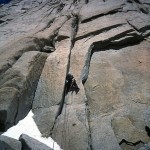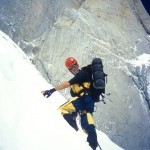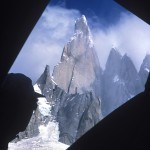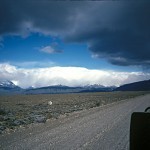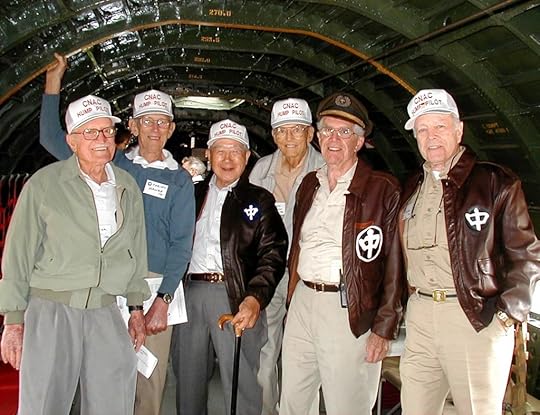Gregory Crouch's Blog, page 27
January 20, 2013
Enduring Patagonia photos 2
January 19, 2013
Enduring Patagonia photos 1
January 13, 2013
Remember that beautifully restored DC-3? Here’s what it looked like with CNAC
Remember that beautifully restored DC-3 I posted about before Christmas? The one that had once flown for the China National Aviation Corporation as CNAC No. 100 and had recently been returned to service in Pan Am livery by the Historic Flight Foundation?
Well, Liz Matzelle at the HFF managed to track down a photo of the airplane when it was in service with CNAC. (It was hiding in the cnac.org archives all along, on the page of Captain Sam Belieff.)
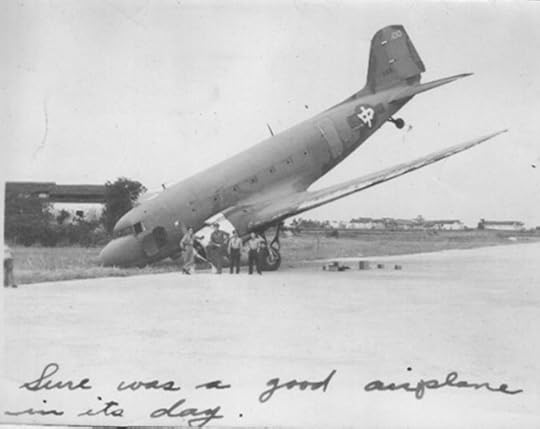
CNAC No. 100 after a rough landing.
Despite the laconic caption inked on the photo above, I’m pretty certain that the CNAC mechanics had No. 100 back in service within a few days.
No anecdotes about the airplane made it into China’s Wings, my book about William Langhorne Bond and the madcap adventures of the China National Aviation Corporation, but the next plane in fleet number sequence most definitely does.
CNAC No. 101 was the C-47 in which CNAC wildman Jimmy Scoff died leaving Dinjan on the night of October 7, 1944, when a violent thunderstorm tore the wing off the plane (China’s Wings, pp. 358-359). Scoff was CNAC’s great wildman during the Hump years, the star of many of the company’s most legendary stories — most notoriously the time he shot the lock off the door of a whorehouse in Calcutta. (China’s Wings, pp. 326-327)
Here’s the report about Scoff’s fatal accident at cnac.org. Apparently the wing of Scoff’s airplane stayed stuck in a tall tree through the rest of the war.
January 10, 2013
So, you want to learn to climb big walls?

Chris McNamara of Supertopo
If you’ve ever dreamed about climbing a big wall like Yosemite’s El Capitan, my friend Chris McNamara, main dude at the essential climbing website Supertopo.com, has just released a book that’ll teach you how to do it.
His new book, How to Big Wall Climb, released this week, promises to add tremendously to the how-to climbing genre. Chris is an exceptionally accomplished big wall climber, having climbed more than 100 of the beasts, including a whopping 70 times up the Yosemite behemoth El Capitan. He has forgotten more about big wall climbing than most of us are ever going to know, but he’s done his best to download his methodical, step-by-step brain into his How to Big Wall Climb book so the rest of us can glean some of his expertise. You can get a great sense for Chris and for what he has done watching the three and a half minute video on his How to Big Wall Climb page
Chris is a great guy, and I’m really looking forward to getting my hands on his book. His ability to get things done leaves me in awe. The only strike against Chris that I can think of is that he’s a “janitor,” a “sweeper,” a stand-up-paddle surfer, and although I’ve been amazed to watch how fast he’s made himself good at it, one of these days he’ll gird up his loins and learn to pop to his feet like the rest of us. ;-)
January 9, 2013
Flying the Hump
Pioneering the Hump route over the eastern spur of the Himalayas in late 1941 and 1942 certainly has to be considered to be the China National Aviation Corporation’s capstone achievement from its two decades of service in the Far East, and its myriad adventures on the Hump comprise one whole part of my book, China’s Wings.
Here are three photos of the Hump taken by CNAC pilot Jim Dalby, and one of a bunch of CNAC veterans at their 2002 reunion:
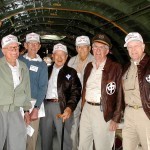


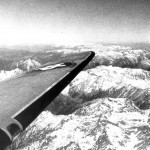
There are a lot of great Hump-related items on the internet I’ve stumbled across, and I thought I’d link to a few of them:
A great Flickr photostream of World War II: China-Burma-India theater related photos.
A WWII newsreel piece about flying the Hump on YouTube, and a modern video showing a DC-3/C-47 engine start.
Here’s a video of an old B-24 pilot describing some of his experiences on the hump. (I think he was probably flying a C-87, the cargo version of the B-24.)
This one shows a C-46 commando landing and taking off in the Northwest Territories.
Shifting to the written word, here’s an article about the Hump in Air Force magazine, and here’s a scan of the article Teddy White wrote about it in the September 11, 1944 issue of Life, which has some great pictures.
All of the record holders for number of Hump trips are CNAC pilots, and I was fortunate enough to interview the two guys who flew it the most while writing China’s Wings. On the left, that’s Dick Rossi, who set the record at 715 trips; On the right is Pete Goutiere, in second place with 680 trips.
Those are incredible numbers, especially considering that for much of the war, the Air Corps considered 100 Hump trips to be a full tour of duty.
December 13, 2012
China’s Wings on Pinterest
I’ve collected nearly 200 China’s Wings-related photos on my China’s Wings Pinterest board.
Click on over, follow the board, and check ‘em out!
December 12, 2012
Photos of restored C-47/DC-3
About two weeks ago, I posted about a C-47 that once flew the Hump for CNAC that has been restored to flying condition by the Historic Flight Foundation in Everett, Washington.
Shortly after I posted that story, I got an email from Liz Matzelle, a Historical Flight Foundation volunteer, filled with details about the airplane. Apparently, when it was with CNAC, it was a Lend-Lease C-47 that rolled off the Douglas assembly line in Long Beach and flew as CNAC #100, and then after the war was renumbered as XT-20. CNAC #100 doesn’t feature in any of the stories I related in China’s Wings, but it was there flying alongside the other airplanes I did mention, and being flown by the people in the book. So far, I haven’t seen it in any of the wartime photo collections I’ve perused, but since there are more pictures of airplanes in the old CNAC pilots’ collections than there are of women (by far), I wouldn’t be surprised if there are a few photos of #100 I just haven’t noticed yet.
Liz was kind enough to include some photos of their restoration in her email (and grant me permission to post them). They’re in the gallery below, and I must say, it’s great to have the old bird back in the air.
Isn’t she gorgeous?
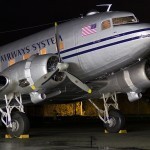
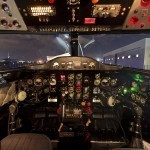



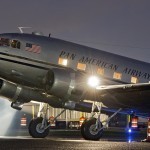



December 4, 2012
The world’s most beautiful school libraries

The Law School Library at the University of Michigan
A buzzfeed link to someone’s pick for the ten most beautiful school libraries in the world.
They’re gorgeous, pillars of civilization.
Thanks to Bo White and Amrita Dhar, I was in one of them last month.
More thoughts on David Oliver Renlin’s tragic suicide
Building on yesterday’s post about David Renlin’s suicide. The event haunts me.
First off, let me do what I should have done first off yesterday, in my initial flush of shock and surprise, which is offer my condolences to his friends and family for their great loss. For that omission, I am deeply sorry. What an unmitigated nightmare this episode must be for them.
Looking at news accounts this morning, like this one in The Los Angeles Times, it appears that Renlin died more than two weeks ago. (Interestingly, someone named “wilde75oscar” appended a comment to the bottom of the LA Times story at 9:55 am, a handle I find remarkably similar to the one used by “Oscar Wilde” to comment on my yesterday’s post at 4:06 a.m. this morning.)
This tragedy haunts me because I know how vulnerable I am in my work to a nightmare unfolding similar to the one that plagued Renlin. As a friend posted on the FB link to my post, “To have a book be as successful and admired as Three Cups of Tea, then discover, later, that you have been profoundly deceived and that said book is full of lies would be an emotional roller-coaster ride that would be hard for anyone to take.”
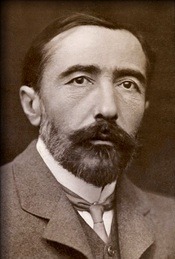
Joseph Conrad
I’m pretty sure I would find it unendurable.
Lord Jim comes instantly to mind.
And after making yesterday’s post, I noticed that December 3 was the 155th anniversary of Joseph Conrad’s birth.
December 3, 2012
This news causes me intense pain…
I just saw the news about David Oliver Renlin’s suicide, and it causes me intense pain, because I feel like I viscerally understand how this tragedy happened.
For those of you who might not know Renlin’s name, he’s the co-author of Three Cups of Tea, the story about Greg Mortenson and the Central Asia Institute (CAI).
I was outrageously angry and frustrated with myself when Three Cups of Tea was topping every best-seller list on earth — I’d known about CAI and Mortenson for years and never had the idea to write a book about it.
And after Jon Krakauer’s Byliner expose brought to light the dark side of Mortenson’s feel-good story, I was awash with relief that it hadn’t occurred to me.
Renlin got that inspiration, and it seems to have cost him his life.
As a writer on the lookout for a “high-concept” story, I could easily have fallen under Mortenson’s spell, and if in our interviews I was having my head filled with mis-remembrances, not-quite-the-truths, distortions, disinformations, evasions, inaccuracies, inventions, misrepresentations, prevarications, misstatements, and other whoppers, big and small, I might not have had the brains — or the courage — to smoke them out, either.
That thought fills me with terror, because there but for the grace of God goes me.
David Oliver Renlin’s blood is on someone’s hands, I think I know whose, and it fills me with bitterness.
So many people have been hurt by this, and such an incredible opportunity has been squandered.
And to be 100% clear, I don’t think that person is Jon Krakauer.
I’m grateful to the CNAC veterans for being truthful in the interviews which were crucial to the writing of China’s Wings. In so many ways, I was at their mercy.
*Here’s a link to The New York Times story about Renlin’s suicide.

